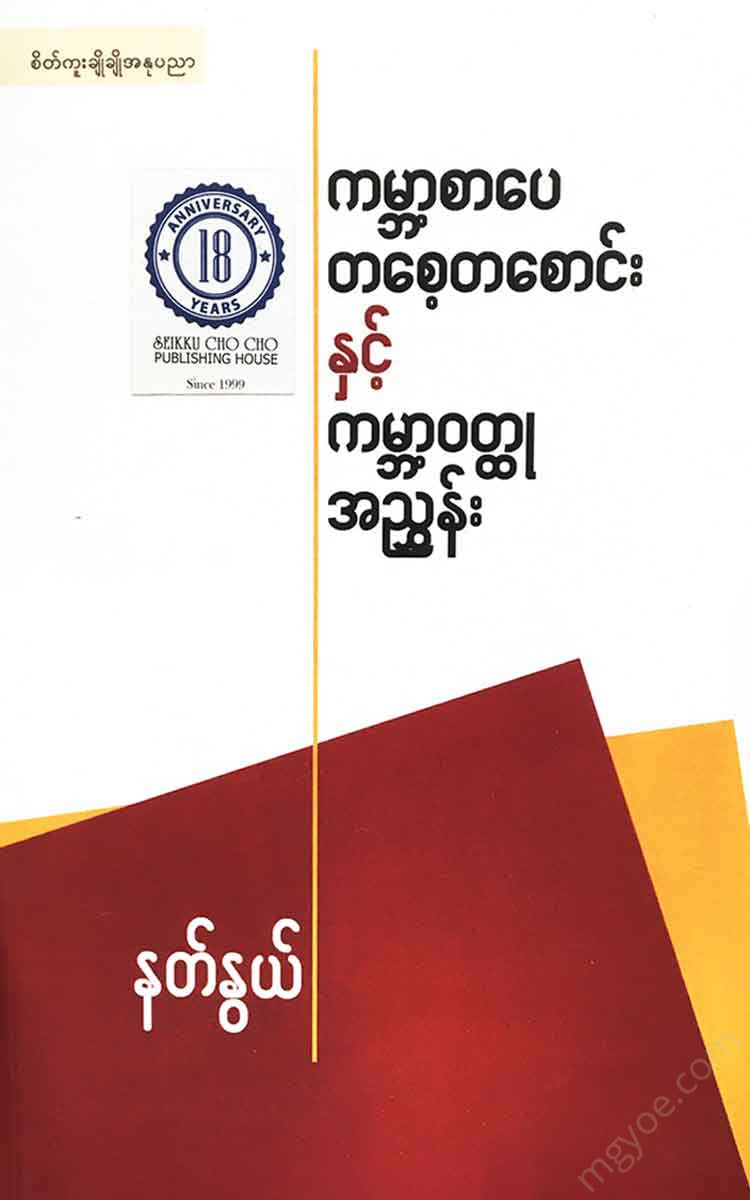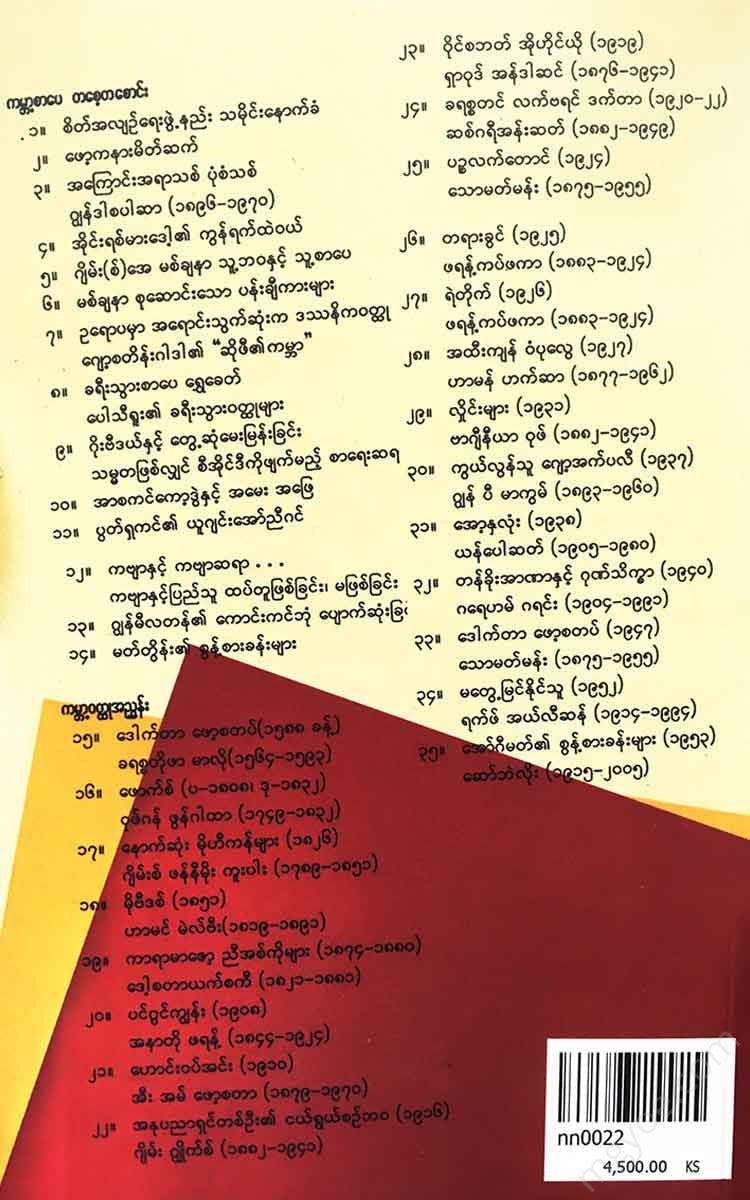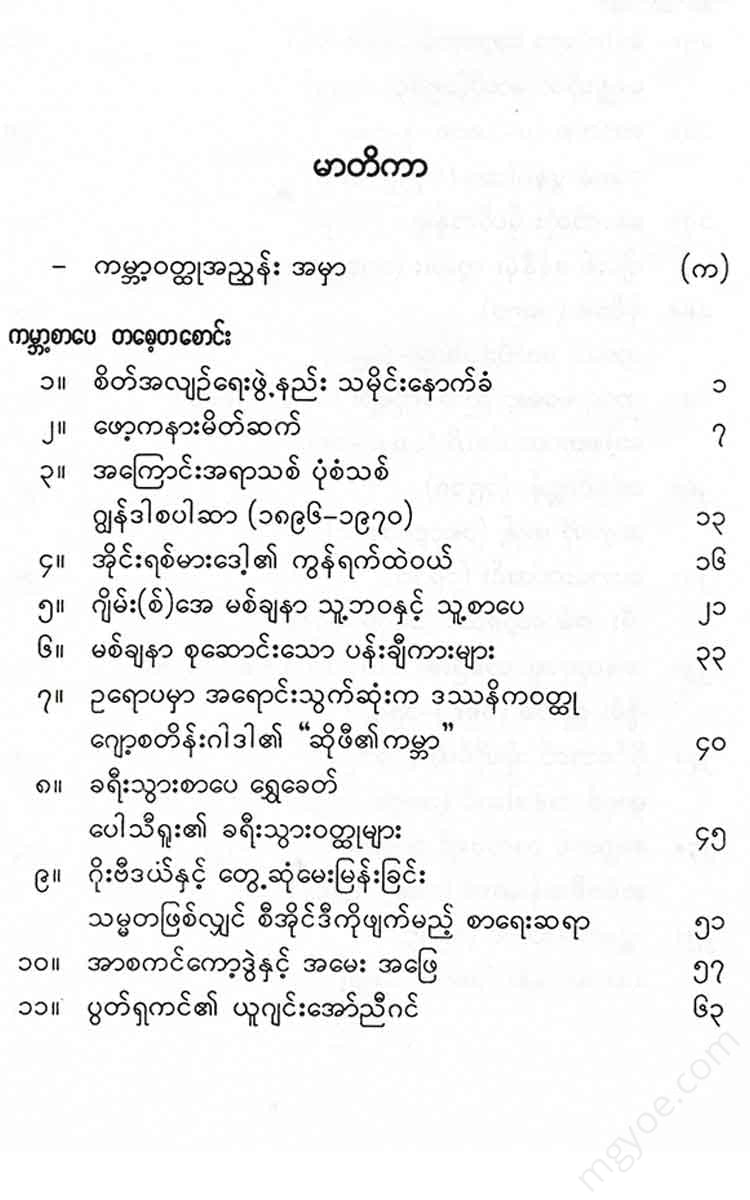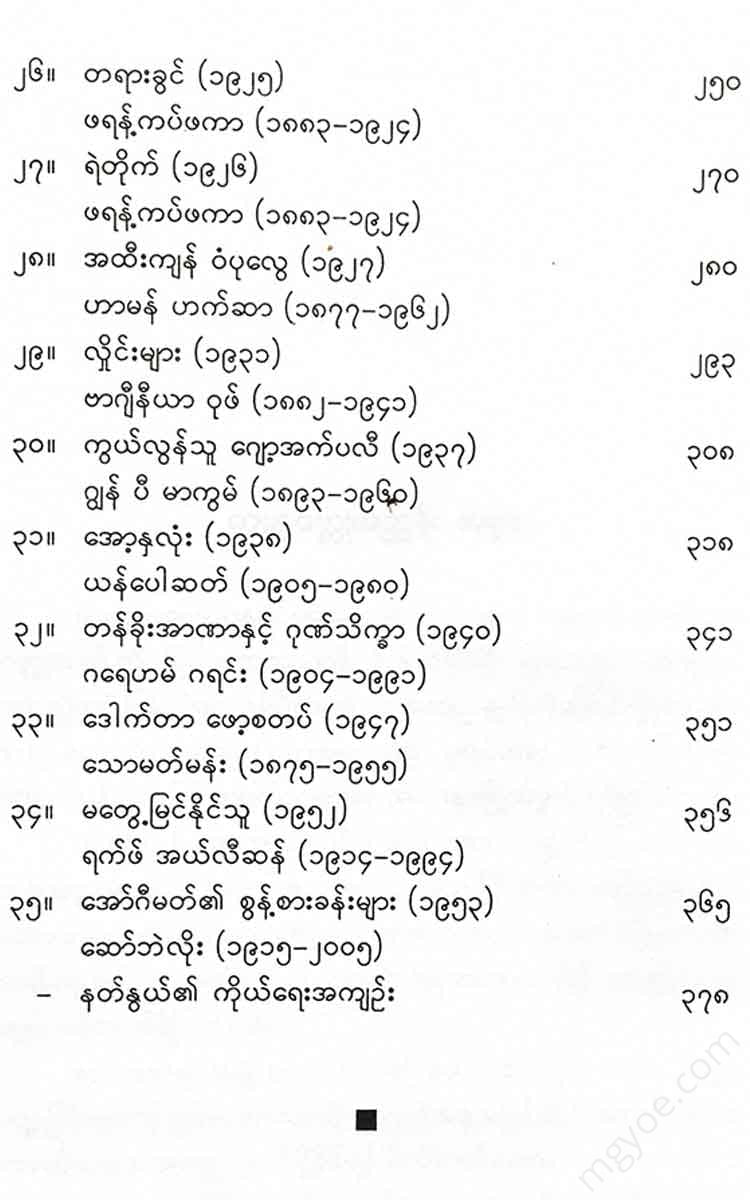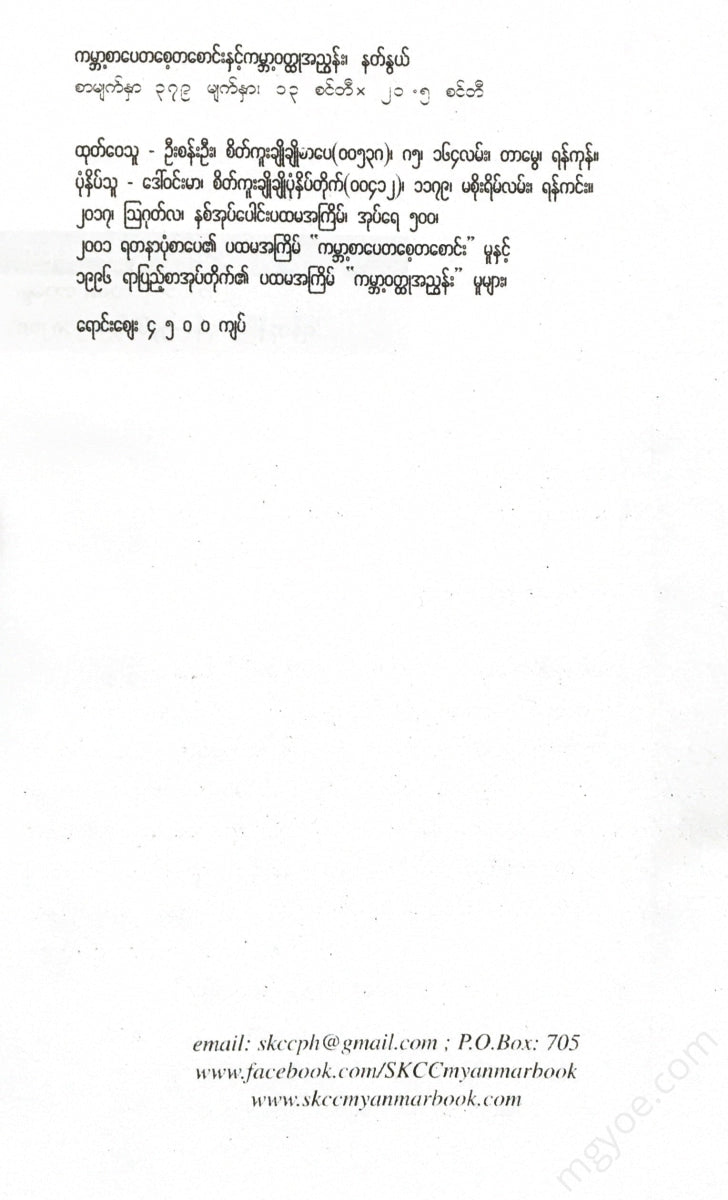စိတ်ကူးချိုချိုစာပေ
Natnwe - A Glimpse of World Literature and a World Literature Index
Natnwe - A Glimpse of World Literature and a World Literature Index
Couldn't load pickup availability
Stream of Consciousness has been used in world literature for over 140 years, and various psychological and emotional writing methods have developed based on it. However, Burmese novels have also been beautifully and delicately written using stream of consciousness and other emotional writing methods for a long time. However, in recent years, when talking about modern or contemporary writing methods, this stream of consciousness writing method has been mentioned quite a bit.
However, there are very few studies that have demonstrated the appropriate use of the metaphorical style in Burmese novels.
It is also rare to find any mention or translation of the famous novels of writers who used the emotional writing style in world literature.
So, as a way of connecting the dots between the two, I thought it would be a good idea to briefly mention some of the world's great writers who used the method of composition and their notable works.
The narrative writing style is not about systematically structuring events according to their order, but rather, writing about the reactions, reflections, and feelings that arise in the minds of each character as they flow.
It is a psychological composition method based on inner movement.
In the poetic style of composition, metaphors and symbols used in the composition of poetry are particularly found.
This method of composition is not uncommon now, but it is very different from the traditional narrative composition of the past.
The style of emotional writing uses poetic devices, metaphors, symbolism, and psychology, so it is often confused with symbolic and psychological works. In addition, it is now associated with philosophical works because it contains thoughts and ideas in the composition of the emotional response.
However, in the 18th century, when a novel was considered to be a specially crafted and detailed telling of a story, the method of writing a novel was quite sophisticated and there would have been those who could not understand or accept it.
However, the great writers who wrote in the spirit of the times have had a considerable influence on modern literature, and their great novels remain among the classics of world literature to this day.
Although James Joyce and Virginia Woolf are widely known and talked about as great writers who wrote in a relaxed style, Lawrence Stanton was the first to use the relaxed style, and Edward Jardine and Dorothy Richardson were also earlier than Joyce and Woolf. Marcel Proust was also slightly earlier.
Critics have considered Lawrence to be a forerunner of later romantic writers for his unique style and the intense inner turmoil of his novel "Tristan Shandy."
This novel is an anti-novel with an anti-hero, and was a major influence on James Joyce and Marcel Proust.
Although Shandy narrates the story in this novel, Shandy is not born until Volume 3. Stan admits that he based his writing on the ideas of the philosopher John Locke. Thus, the author uses the traditional retrospective system to focus on the inner emotions of the characters.
However, the first novel to systematically write a narrative essay was Edward Dujardin's novel "We Will Not Go to the Woods Again."
(Even James Joyce himself admitted that he was not the first to invent the method of writing a novel that he wrote in his "Take It Easy" style, but that Edward Dujardin had written a similar novel about 30 years earlier.)
Furthermore, the English writer Dorothy Richardson was the first person to write about the method of emotional writing before James Joyce and Virginia Woolf.
She was a contemporary of Joyce and Woolf, nine years older than Joyce and Woolf.
Joyce published his collection of short stories, "Dublinians," in 1914, but his first novel, "A Portrait of the Artist as a Young Man," was published in 1916.
It was not until his sequel, "The Journey," was published in 1922 that he became known as a passionate writer.
Dorothy Richardson published The Peaks of the Roof, the first volume of her 12-volume novel "Journey," in the same year as The Sea Voyage, in 1915.
However, "The Voyage of the Dawn Treader" is a traditional illustrated novel, and F wrote it at the urging of her friend, the writer E.M. Forster.
Woolf's Night and Day, published in 1919, is also a fictional novel. Woolf became famous for her use of the metaphorical style in her novels "Mrs. Dalloway" (1925), "To the Lighthouse" (1927), and "The Wave" (1931).
However, Dorothy Richardson, who began writing her 12-volume "Travelogue" in 1915, did not achieve the same level of success as Joyce and Woolf at that time.
However, in recent years, her long novel "Journey" has been reprinted and is now widely acclaimed, having been praised by the famous writer and critic Anthony Bach and other prominent feminists.
This is a brief history of the flow-of-mind writing style, and I will briefly mention some of the world-famous novels that use the flow-of-mind writing style so that Burmese readers can learn more about the flow-of-mind writing style.
Sandar Rukwon Magazine, No. 247, June, 1990.
